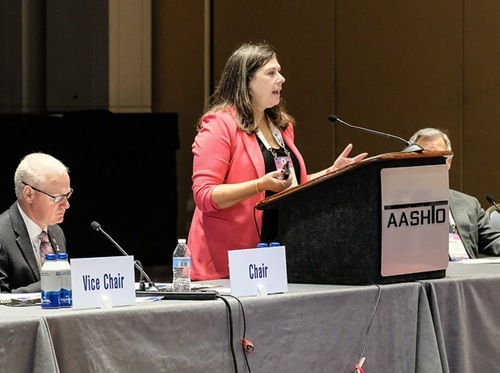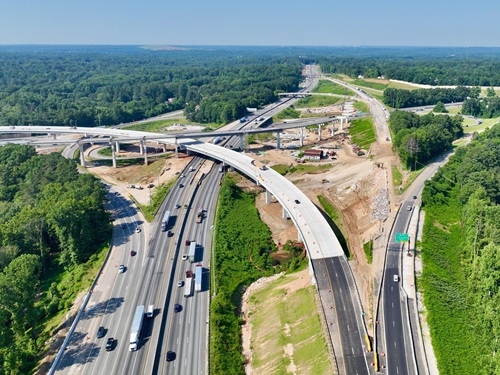The Eno Center for Transportation recently held a webinar that examined how rising construction costs could impact surface transportation funding reauthorization efforts – especially as new “Build America, Buy America” rules might exacerbate those cost issues further.
[Above photo by Georgia DOT]
The webinar featured Susan Howard – director of policy and government relations for the American Association of State and Highway Transportation Officials – and Dr. Alison Premo Black, senior vice president and chief economist at the American Road & Transportation Builders Association or ARTBA.
[To watch the full webinar, click here.]
Both discussed in broad terms how rising construction costs have impacted their members and how increased costs are influencing their advocacy efforts heading into surface transportation reauthorization.

Part of the discussion revolved around a white paper issued by the Eno Center in August entitled “Rising Construction Costs: Analyzing the Contributors to Cost Escalations and the Impact on Federal Transportation Infrastructure Investments.”
That paper delved into a number of data points, including competing cost indices and long-term construction cost trends, and how those impact federal infrastructure investments – as well as implications for future transportation funding.
The paper also noted that – since the passage of the Infrastructure Investment and Jobs Act or IIJA in 2021 – there has been significant growth in highway construction costs due to a number of factors: supply chain disruptions, higher material and input costs, higher borrowing costs, labor market shortages, demand side increases, growing regulatory costs, and higher quality projects.
“High material costs in every part of country have been a big concern for state departments of transportation over the last few years,” AASHTO’s Howard said. “There is no one single factor that has gotten us to this place. State DOTs are also seeing a lower number of bidders on projects and that reduction in competition affects pricing as well.

She added that new “Build America, Buy America” rules could potentially drive costs higher where construction materials are concerned.
“There are whole complex categories of materials now included [in the rules] that were not included before,” Howard said.
ARTBA’s Black added that in some cases construction sector price spikes are more severe at the local level and in rural parts of the country – especially where labor prices are concerned.
“When we look at the national level, [construction worker] wages are up 5 percent with most of those increases in line with other areas of economy,” she said. “But when you get down to the local/county level, you see highway and contractor wages really go up – especially in small rural areas.”
That’s in part due to the smaller workforces in rural areas – workforces that are unable to expand quickly to accommodate the needs of larger projects.

“We’ve seen more [transportation] money flowing from federal or state governments so, all of sudden, you have two or three major projects underway where in the past you might have had only one,” Black pointed out. “Now you have to attract more labor. That is where we’ve seen labor costs more than double – sometimes with wages rising 15 percent to 20 percent, something urban areas may not see.”
That’s definitely a major challenge going forward, Black warned – especially as other sectors of the economy ramp up and compete for labor.
“We’re seeing a lot of investment in manufacturing, in oil and gas, and residential construction – all of that puts greater demand on the existing pool of labor for transportation projects,” she said. “And anything that reduces that labor supply poses a big challenge in terms of project costs and delivery timelines. I don’t see how we can do more with less based on the complexity of projects on the table.”
 Top Stories
Top Stories
New AASHTO Domestic Materials Self-Certification Form
November 14, 2025 Top Stories
Top Stories

